
It is all very well saying that shooting is about the day and the size of the bag is almost an irrelevance. I agree that the number of birds in the bag is rarely related directly to how much pleasure we get from being out with our friends. But at some stage we do need to look at the figures.
Poring over them and working out our returns, the percentage of released birds shot over the course of the season, will help us to plan and, importantly, gives us something to work with. If a shoot has consistently low returns when compared with its neighbours, it should carry out some critical self-analysis and find out why. Work out what it does well and work on improving the bits that don’t. To do otherwise is a waste of time, effort and money.
If we release pheasants and partridges, we have a duty to look after them, feed them, protect them from predators and to manage their habitat in a such a way that they want to stay somewhere near where they were released. Statistically, if we shoot 40 percent of what we release, 10 percent of the birds will be left on the ground at the end of the season, because you cannot shoot them all and nor should you aim to.
Another 20 percent will have been predated between the release date and the end of January, predominantly by foxes. Ten percent will have died from accidents, disease or from natural causes. The remaining 20 percent will have simply wandered off because they preferred the look of the ground over the boundary, or because they have been disturbed and couldn’t settle where they were. I remember a cartoon some years ago of a pint of beer being poured on to a table at a pub and running off on to the floor. The cartoon compared it with a pint of beer being poured on to a table covered in sponges and cloths and strategically placed beer mats that were soaking it up, keeping it in one place and preventing it from running off the table.
هذه القصة مأخوذة من طبعة November 20, 2019 من Shooting Times & Country.
ابدأ النسخة التجريبية المجانية من Magzter GOLD لمدة 7 أيام للوصول إلى آلاف القصص المتميزة المنسقة وأكثر من 9,000 مجلة وصحيفة.
بالفعل مشترك ? تسجيل الدخول
هذه القصة مأخوذة من طبعة November 20, 2019 من Shooting Times & Country.
ابدأ النسخة التجريبية المجانية من Magzter GOLD لمدة 7 أيام للوصول إلى آلاف القصص المتميزة المنسقة وأكثر من 9,000 مجلة وصحيفة.
بالفعل مشترك? تسجيل الدخول

United we stand
Following United Utilities' decision to end grouse shooting on its land, Lindsay Waddell asks what will happen if we ignore our vital moors

Serious matters
An old gamebook prompts a contemplation on punt-gunning
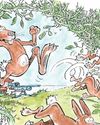
They're not always as easy as they seem
While coneys of the furry variety don't pose a problem for Blue Zulu, he's left frustrated once again by bolting bunnies of the clay sort

Debutant gundogs
There's lots to think about when it comes to making the decision about when to introduce your dog to shooting
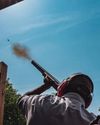
When the going gets rough
Al Gabriel returns to the West London Shooting School to brush up on his rough shooting technique

The Field Guide To British Deer - BDS 60th Anniversary Edition
In this excerpt from the 60th anniversary edition of the BDS's Field Guide To British Deer, Charles Smith-Jones considers the noise they make
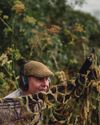
A step too far?
Simon Garnham wonders whether a new dog, a new gun and two different fields in need of protection might have been asking too much for one afternoon's work
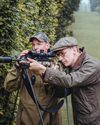
Two bucks before breakfast
A journey from old South London to rural Hertfordshire to stalk muntjac suggests that the two aren't as far detached as they might seem
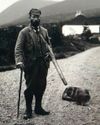
Stalking Diary
Stalkers can be a sentimental bunch, and they often carry a huge attachment to their hill

Gamekeeper
Alan Edwards believes unique, private experiences can help keepers become more competent and passionate custodians of the countryside